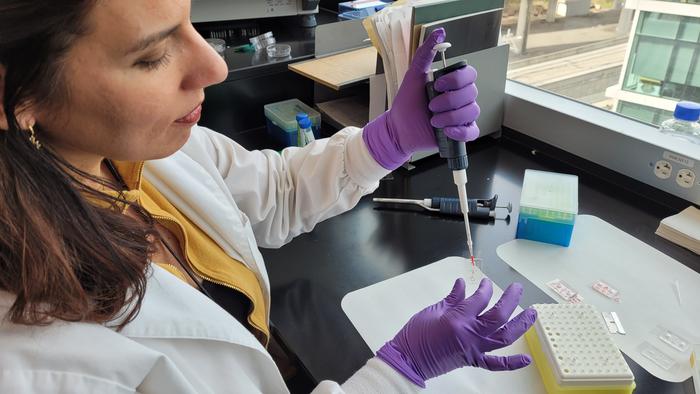Recent research from Oregon Health & Science University (OHSU) has unveiled the intricate role that specialized cells surrounding small blood vessels, referred to as perivascular cells, play in the dysfunction of blood vessels associated with chronic illnesses like cancer, diabetes, and fibrosis. This groundbreaking discovery, published in the esteemed journal Science Advances, signifies a potential turning point in the treatment and understanding of these common diseases. The implications of this study could reshape therapeutic strategies, emphasizing the importance of targeting not only endothelial cells but also perivascular cells in vascular disease management.
Led by Luiz Bertassoni, a pioneering figure in the realm of biofabrication and a professor at the OHSU Knight Cancer Institute, the research team has illuminated a paradigm shift in vascular biology. Traditionally, endothelial cells, which line blood vessels, were considered the primary contributors to vascular dysfunction. However, this new study positions perivascular cells as critical sensors that can perceive changes in their microenvironment. They respond by relaying signals that interfere with blood vessel function, thus exacerbating disease progression. Such a realization urges a reconsideration of how we understand vascular health and its deterioration in the context of chronic diseases.
Bertassoni’s innovative approach to vascular research over the past decade has been transformative. He and his team were the first to successfully 3D print blood vessels in a laboratory setting, a notable advancement acknowledged by Discover magazine as one of the leading scientific breakthroughs of the year. This pioneering work has since evolved to focus on engineering blood vessels that more accurately replicate human physiology, facilitating the study of complex diseases in a controlled environment. The ability to simulate human-like vascular structures has provided invaluable insights into the biochemical and mechanical processes that underline these diseases.
Cristiane Miranda Franca, the lead author of the study and a promising talent at OHSU, highlights the importance of this research in unveiling the inflammatory role of perivascular cells. According to Franca, the findings indicate that these cells are not just passive participants; they actively influence the vascular response to changes in their local environment. This new understanding opens avenues for developing advanced therapeutic approaches that would aim to customize treatment plans focused on preserving or restoring normal vascular function.
Additionally, the research employed a sophisticated “blood vessel on-a-chip” model, ingeniously crafted by Christopher Chen from Boston University and the Wyss Institute at Harvard. This innovative model allowed researchers to recreate physiological conditions such as tissue stiffening and scarring, which are prevalent in aging and chronic diseases. Through this experimentation, the team observed that perivascular cells were pivotal in driving blood vessel integrity, contributing to leakage and distortion that promote inflammation and progressive disease states.
Removing perivascular cells from this model resulted in a dramatic failure of blood vessels to respond to changes in the tissue environment. This experimental outcome underscores the necessity of these cells in mediating vascular reactivity. Franca articulated the potential ramifications of this discovery: by understanding these mechanisms better, it may be possible to devise interventions that prevent the onset of vascular-related complications in chronic disease patients.
The implications stretch beyond vascular health, hinting at potential prospects for cancer prevention strategies. Early detection and therapeutic interventions aimed at perivascular cells may halt the development of tumors before they escalate into more severe forms of cancer. Bertassoni astutely noted that proactive measures could thwart the transition of precancerous lesions into full-blown cancer, marking a drastic shift in cancer treatment paradigms.
The team at OHSU is committed to further exploring these findings, fueled by their conviction that targeting perivascular cells could yield significant advances in therapeutic strategies. The groundwork laid by this study is already fostering a collaborative spirit among researchers in different fields, driving a unified goal of innovating treatment methods that harness the body’s own cellular systems to combat disease.
As the scientific community reacts to this publication, the news reverberates through both academic and clinical circles. The burgeoning interest in employing bioengineering techniques to understand and tackle complex diseases is a testament to the transformative potential of interdisciplinary research. Moreover, it serves as a reminder of the vital need to translate lab discoveries into tangible clinical applications, ensuring that these insights yield real-world benefits for patients suffering from chronic illnesses.
Both OHSU and collaborative institutions involved in this research are now looking towards future studies that will build upon these foundational findings. By investigating the multifaceted roles of perivascular cells in greater detail, scientists hope to delineate the specific pathways through which these cells influence vascular health and explore novel therapeutic avenues that could enhance patient outcomes across various disease states.
In summary, the research from OHSU delineates a pivotal evolution in our understanding of vascular biology. It challenges long-held perceptions about the roles of endothelial and perivascular cells, paving the way for new approaches to treating chronic diseases. The potential for early intervention and tailored therapeutic strategies emphasizes how critical research advancements can lead to significant healthcare transformations, with the exciting promise of improved outcomes for patients.
Subject of Research: Perivascular cell function in blood vessel health
Article Title: Perivascular cells function as key mediators of mechanical and structural changes in vascular capillaries
News Publication Date: 10-Jan-2025
Web References: Science Advances
References: Not applicable
Image Credits: Credit: OHSU/Christine Torres Hicks
Keywords: Vascular biology, chronic diseases, perivascular cells, endothelial cells, cancer, diabetes, fibrosis, therapeutic strategies, bioengineering, vascular dysfunction, inflammation, extracellular matrix.





